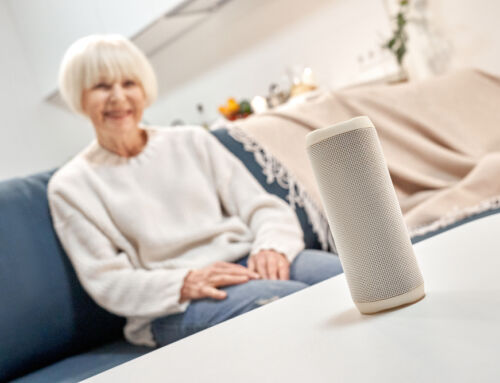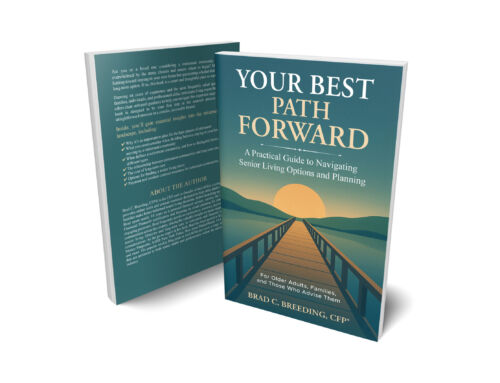The holiday season is a joyful time for most people as they spend time with friends and family, eating delicious food and reminiscing about good times in years past. But for others, the period between Thanksgiving and New Year’s is particularly difficult as they struggle with loneliness and grief for loved ones who are no longer in their life.
Year round, loneliness and isolation are common issues for seniors, and a recent article in The Wall Street Journal highlighted this growing problem among the Baby Boomer generation.
The solitary boomers
The article, entitled The Loneliest Generation: Americans, More Than Ever, Are Aging Alone, discusses the topic of senior loneliness, a subject that I frequently blog about because it is both so common and such a serious issue, impacting both mental and physical health for seniors.
As the article notes, according to U.S. census data, approximately one in 11 people age 50 and older does not have a spouse or partner, nor a living child. That means around eight million seniors do not have a close loved one, who would typically be a primary source of care and companionship for an older person.
And this number is expected to increase as the Baby Boomers grow older. Unlike their parents before them, Baby Boomers typically had fewer children, and their marriages ended in divorce at a far greater rate than earlier generations. In fact, according to census data, more than a quarter of Baby Boomers are either divorced or were never married. As a result, roughly one in six Boomers now lives alone.
Among those most likely to live on their own and lack a partner or close family are older college-educated women. This is in part because a woman’s life expectancy is nearly five years longer than a man’s. But it is also because 27 percent of American women age 50 and over were widowed or never married, compared to only 16 percent of same-aged men.
>> Related: The Key Difference Between Social Isolation & Loneliness
The health and societal implications of loneliness
In 1972, the General Social Survey, conducted by the University of Chicago, began examining Americans’ feelings and beliefs. A recent iteration of that survey asked study participants how often they were without companionship, felt left out, or felt isolated from others. Baby Boomers responded that they experienced these feelings of loneliness and isolation more often than any other generation, even older generations.
As I’ve written about before, a so-called “senior loneliness epidemic” threatens to become a major public health crisis in this country—one that could strain resources and budgets.
Research out of Brigham-Young University shows how negatively loneliness impacts people’s physical health—as much a predictor of early death as smoking up to 15 cigarettes daily or drinking more than six alcoholic beverages per day. Researchers have found that loneliness is even worse for a senior’s health than being obese or physically inactive. Conversely, they discovered that increased social interaction was linked to a 50 percent decrease in the risk of an early death.
Loneliness also is detrimental to seniors’ mental health. While there may be a chicken-or-egg component, those who are lonely are much more likely to become depressed, experience cognitive decline, or suffer from dementia than their counterparts who have a strong social network of friends and family to support them.
Seniors’ increasing lack of a social support system costs Medicare $6.7 billion annually, according to a joint study by AARP, Harvard, and Stanford University. The reason for this astronomical figure? Since more and more people have no one to care for them as they age, they must rely on nursing facilities and hospitalization, and Medicare often must foot the bill.
>> Related: The Senior Loneliness Epidemic & Solutions to “Cure” It
Solutions to solitude
As we grow older and retire, it is common for our social networks to dwindle. You no longer are meeting and interacting with people in a work environment; friends and loved ones may move or pass away; age-related issues like hearing loss, loss of mobility, or inability to safely drive can limit opportunities to socialize. But regardless of these common challenges, your marital status, or whether you had children, loneliness and isolation do not have to be an inevitability of growing older.
As the Wall Street Journal article points out, many faith-based organizations are working hard to support those seniors who lack social connections. Meals on Wheels not only delivers food to 2.4 million seniors annually, they also are expanding their services to include high-tech monitoring of clients to screen for isolation, referring those in need of support to social workers.
Other seniors are taking matters into their own hands, forming community-based groups, similar to a co-op, to support one another with things like transportation, common household needs, and social opportunities.
And retirement living options, such as a continuing care retirement community (CCRC), can also be another option that seniors should at least consider as they look to their future, knowing the detrimental impact that loneliness and isolation can have on their mental and physical health.
>> Related: Why Every Retiree Should Consider a Retirement Community
The many social benefits of senior living
All senior living and retirement communities offer residents a ready-made support system—a group of peers, all of whom live in close proximity. Many of these communities also will provide residents with social opportunities—some of which happen organically and others that are more formally planned.
But a CCRC takes seniors’ social health to the next level, providing a vibrant, active lifestyle and group outings where residents can socialize. Also, residents typically get at least one meal per day in the community’s dining hall, which gives people a chance to enjoy one another’s company.
The numerous emotional and physical health benefits that this CCRC support network provides was recently confirmed and quantified by the AgeWell Study that I blogged about last week, which proved that CCRC residents are in fact happier and healthier than their peers who live elsewhere. The study found that CCRC residents rated themselves higher for factors like emotional, social, physical, intellectual, and vocational wellness, healthy behaviors and lifestyle choices, and a positive outlook.
>> Related: New Study Shows CCRC Residents ARE Happier and Healthier
Guarding against loneliness
Aging alone can create numerous challenges. While there are resources available to seniors who live on their own, the increasing number of Baby Boomers who are suffering from isolation and loneliness presents a looming crisis for our country.
Our society must look for innovative ways to support those who are living alone, and seniors must also be forward-thinking when they consider where they will live as they grow older and how they can protect themselves from the “senior loneliness epidemic.”
If you are interested in learning more about CCRCs in your area, the database of community profiles at myLifeSite can help. Learn more here.






